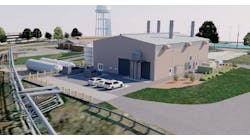This is the latest in a series of articles that emerged from Microgrid 2019, held in San Diego May 14-16. Here we look at issues surrounding microgrid financing.
As businesses and enterprises explore microgrid financing, they find themselves grappling with several questions.
What are the project’s key goals: Resiliency, sustainability or cost reduction? What risks are the parties willing to take and what type of return on investment do they expect? And what type of financing is available?
“What is the threshold of pain for disruption of service?” adds Michael Boswell, vice president of distributed generation projects for Concord Engineering. “I would ask a financier or owner what do you need to validate your model — to convince yourself that you are comfortable with the revenue streams — and whether you can get your money out.”
Boswell’s comments came during the Microgrid Knowledge 2019 conference in San Diego. He spoke at the session, “Finance & Economics: Capturing and Quantifying the Full Worth of a Microgrid.”
Most microgrid owners want to deploy renewables. But a microgrid may also use combined heat and power as well as battery storage. It is a question of an enterprise’s goals and financing options, which may involve leveraging public-private partnerships or securing energy service agreements.
When it comes to resiliency, or the ability to bounce back after an outage, it is important for an enterprise to consider how long it can go without power: An hour? Two weeks? And if it can’t sustain an outage, then the project needs a business model that works for owners and other stakeholders.
A private university, Boswell says, is probably willing to pay a premium for resiliency. The campus could earn a return on the project through energy savings and reduced transmission expenses.
Consider the stakeholders
Understanding each stakeholder is key. There are the financiers, who have a short-term view and look mostly at the tax credits; there are the microgrid owners who are looking 10 to 20 years out. And there are consumers who have a 30-year perspective centered on rate stabilization, says Kay Aiken, chief executive of Introspective Systems. Ultimately, she says, a life-cycle economic analysis will determine how different asset mixes would add value.
“I think that the wide range of technologies involved to make a microgrid project work — and the rapidly developing and still small storage market — creates both risk and opportunities for those who dare to get involved in the microgrid market at its present nascent stage,” adds Angela Lipanovich, president of California-based Estruatus Law, on the sidelines of the conference.
Lipanovich, whose firm specializing in cleantech, says rebates for islandable microgrids would help mature the market. “Similar to the rebate programs in various states for solar and storage that have helped grow those industries, state rebate programs should be created specifically for owners/purchasers.”
Think holistically about microgrid financing
Beyond serving an enterprise, a microgrid can also be deployed by a smart city, a jurisdiction looking to increase sustainability and to reduce emissions. Mehdi Ganji, vice president at Willdan Energy Solutions told the conference that urban populations are growing, and they are responsible for 75% of energy consumption and 70% of greenhouse gas emissions.
It’s important to approach the problem holistically and to consider the integration of information and communications into the technology infrastructure, he adds. That means providing granular data and transmitting that information into actionable intelligence.
“Microgrids can integrate the physical infrastructures of the city,” says Ganji. In doing so, they “unlock services and benefits while minimizing risks.”
Projects also must be feasible and comprehensive. “Additional revenue generation can make the projects pencil out,” he adds.
The ideal solution will minimize the risks and optimize the solutions, he notes. The microgrid will provide new benefits and be able to value each attribute, all of which will result in better economics and more access to financing. And that’s true whether it is a private business, a public entity or a smart city.
Track news about microgrid financing and other topics explored at Microgrid 2019. Subscribe to the free Microgrid Knowledge newsletter.
- If Regulators Had a Magic Wand, How Would They Encourage Microgrid Development?
- Utilities are Giving Microgrids the Jolt They Need to Get Up and Going
- Solar-Plus-Storage is Critical to Microgrid Development
- Utility Microgrids: Don’t Let the Meter Get in the Way of Benefits
- The US Military Is Mission Ready: Why it Will Succeed Building Microgrids







